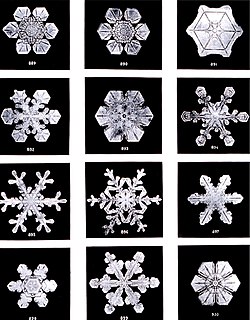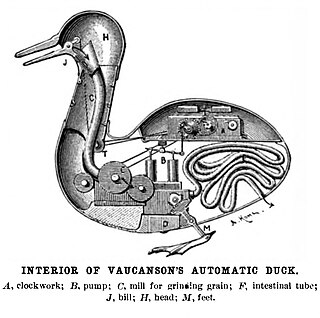Communication is the act of conveying meanings from one entity or group to another through the use of mutually understood signs, symbols, and semiotic rules.
Systems theory is the interdisciplinary study of systems. A system is a cohesive conglomeration of interrelated and interdependent parts which can be natural or human-made. Every system is bounded by space and time, influenced by its environment, defined by its structure and purpose, and expressed through its functioning. A system may be more than the sum of its parts if it expresses synergy or emergent behavior.

In philosophy, systems theory, science, and art, emergence occurs when an entity is observed to have properties its parts do not have on their own, properties or behaviors which emerge only when the parts interact in a wider whole.

Reductionism/Degradationism is any of several related philosophical ideas regarding the associations between phenomena, which can be described in terms of other simpler or more fundamental phenomena. It is also described as an intellectual and philosophical position that interprets a complex system as the sum of its parts.

An organization, or organisation, is an entity – such as a company, an institution, or an association – comprising one or more people and having a particular purpose.
Crisis management is the process by which an organization deals with a disruptive and unexpected event that threatens to harm the organization or its stakeholders. The study of crisis management originated with large-scale industrial and environmental disasters in the 1980s. It is considered to be the most important process in public relations.

Organizational theory consists of many approaches to organizational analysis. "Organizations" are defined as social units of people that are structured and managed to meet a need, or to pursue collective goals. Theories of organizations include rational system perspective, division of labor, bureaucratic theory, and contingency theory.
In philosophy, emergentism is the belief in emergence, particularly as it involves consciousness and the philosophy of mind, and as it contrasts with and also does not contrast with reductionism. A property of a system is said to be emergent if it is a new outcome of some other properties of the system and their interaction, while it is itself different from them.
Theories of technology attempt to explain the factors that shape technological innovation as well as the impact of technology on society and culture. Most contemporary theories of technology reject two previous views: the linear model of technological innovation and technological determinism. To challenge the linear model, today's theories of technology point to the historical evidence that technological innovation often gives rise to new scientific fields, and emphasizes the important role that social networks and cultural values play in shaping technological artifacts. To challenge technological determinism, today's theories of technology emphasize the scope of technical choice, which is greater than most laypeople realize; as science and technology scholars like to say, "It could have been different." For this reason, theorists who take these positions typically argue for greater public involvement in technological decision-making.
The New Thought movement is a spiritual movement which coalesced in the United States in the early 19th century. New Thought was preceded by "ancient thought," accumulated wisdom and philosophy from a variety of origins, such as Ancient Greek, Roman, Egyptian, Chinese, Taoist, Vedic, Muslim, Hindu, and Buddhist cultures and their related belief systems, primarily regarding the interaction between thought, belief, consciousness in the human mind, and the effects of these within and beyond the human mind.

The Tree of Knowledge (ToK) System is a new map of Big History that traces cosmic evolution across four different planes of existence, identified as Matter, Life, Mind and Culture that are mapped respectively by the physical, biological, psychological and social domains of science. The Tree of Knowledge (ToK) System was developed by Gregg Henriques, who is a professor and core faculty member in the Combined-Integrated Doctoral Program in Clinical and School Psychology at James Madison University. The ToK System is part of a larger Unified Theory of Knowledge that Henriques describes as a consilient scientific humanistic philosophy for the 21st Century.

Biological organization is the hierarchy of complex biological structures and systems that define life using a reductionistic approach. The traditional hierarchy, as detailed below, extends from atoms to biospheres. The higher levels of this scheme are often referred to as an ecological organization concept, or as the field, hierarchical ecology.
François Cooren, Ph.D, is a French and Canadian communication scholar and was, from 2005 to 2008, the editor of Communication Theory. He completed his Ph.D. at the Department of communication of the Université de Montréal in 1996, under the supervision of James R. Taylor. He was chairman of that same department from 2006 to 2015, where he is full professor. Cooren also completed a postdoc at the Université de Louvain-la-Neuve, in Belgium.
James Renwick Taylor, sometimes known as Jim Taylor, is a Canadian academic and Professor Emeritus at the Department of Communication of the Université de Montréal, which he founded with Annie Méar and André H. Caron Ed.D in the early 1970s.
Business agility refers to rapid, continuous, and systematic evolutionary adaptation and entrepreneurial innovation directed at gaining and maintaining competitive advantage. Business agility can be sustained by maintaining and adapting the goods and services offered to meet with customer demands, adjusting to the marketplace changes in a business environment, and taking advantage of available human resources.
The communicative constitution of organizations (CCO) perspective is broadly characterized by the claim that communication is not something that happens within organizations or between organizational members; instead, communication is the process whereby organizations are constituted. Specifically, this view contends: “organization is an effect of communication not its predecessor." This perspective is part of a broader constitutive view of communication arguing, "elements of communication, rather than being fixed in advance, are reflexively constituted within the act of communication itself".
Organizational Information Theory (OIT) is a communication theory, developed by Karl Weick, offering systemic insight into the processing and exchange of information within organizations and among its members. Unlike the past structure-centered theory, OIT focuses on the process of organizing in dynamic, information-rich environments. Given that, it contents that the main activity of organizations is the process of making sense of equivocal information. Organizational members are instrumental to reduce equivocality and achieve sensemaking through some strategies — enactment, selection, and retention of information. With a framework that is interdisciplinary in nature, organizational information theory's desire to eliminate both ambiguity and complexity from workplace messaging builds upon earlier findings from general systems theory and phenomenology.
Text and conversation is a theory in the field of organizational communication illustrating how communication makes up an organization. In the theory's simplest explanation, an organization is created and defined by communication. Communication "is" the organization and the organization exists because communication takes place. The theory is built on the notion, an organization is not seen as a physical unit holding communication. Text and conversation theory puts communication processes at the heart of organizational communication and postulates, an organization doesn't contain communication as a "causal influence", but is formed by the communication within. This theory is not intended for direct application, but rather to explain how communication exists. The theory provides a framework for better understanding organizational communication.

Human factors and ergonomics is the application of psychological and physiological principles to the engineering and design of products, processes, and systems. The goal of human factors is to reduce human error, increase productivity, and enhance safety and comfort with a specific focus on the interaction between the human and the thing of interest.
The Montreal School is a school of thought specializing in organizational communication. It was founded by James R. Taylor and his colleagues in the Department of Communication at the Université de Montréal in Canada.






